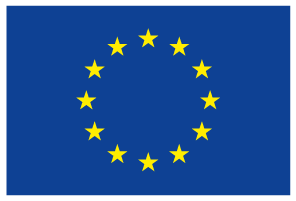Germany
2019
- Type : Project
- Size : Local community
- Area : Residential
Environmental benefit
Reuse of heat generated by Berlin’s metronetwork
Share
Germany
2019
- Type : Project
- Size : Local community
- Area : Residential
Environmental benefit
Discover this use case online

Currently, the Berlin metro network consists of 146 km double track, 10 metro lines and 144 stations. The average distance between two stations is 0.8 km. In respect to thermal comfort, waste heat is a concern for the operator, passengers and working staff in underground transport systems. OPES develops an innovative heat recovery that can reuse the waste heat from the tunnel in the metro network. The recovered heat will be used in a local district heating network heating a three-story building owned by the Metro operator containing office-space and transformator rooms.
The installation will be established for the local, low-temperature grid but through the buffer tank, a link will be prepared to connect the Reuseheat heat recovery to the city-wide district heating network. The network services to the buildings being erected next to the demosite. The Berlin network (approximately 2000 kilometers long) operates at high temperatures. An analysis will be made on how the low-temperature heat recovered can be used in the new, adjacent buildings heated by the conventional district heating network.
The waste heat source is a tunnel where the temperature is 8-15°C (Winter) to 27°C (Summer). The heat recovery will be realized with an air to water heat exchanger as source and a water to water heat pump during the Winter season. The heat recovery system will be made with a multi fan-coil unit which will be placed on a platform within the tunnel. The recovered heat will be used in a local low-temperature district heating network (50°C) extending to approximately 200 meters.
At the night when the metro service is interrupted, the temperature in the tunnel and in the heat system decreases. A 2000 liters buffer/ storage tank will be implemented in order to maximize the performance.
More info
 R-ACES has received funding from the European Union’s Horizon 2020 research and innovation programme under grant agreement N° 892429
R-ACES has received funding from the European Union’s Horizon 2020 research and innovation programme under grant agreement N° 892429
Currently, the Berlin metro network consists of 146 km double track, 10 metro lines and 144 stations. The average distance between two stations is 0.8 km. In respect to thermal comfort, waste heat is a concern for the operator, passengers and working staff in underground transport systems. OPES develops an innovative heat recovery that can reuse the waste heat from the tunnel in the metro network. The recovered heat will be used in a local district heating network heating a three-story building owned by the Metro operator containing office-space and transformator rooms.
The installation will be established for the local, low-temperature grid but through the buffer tank, a link will be prepared to connect the Reuseheat heat recovery to the city-wide district heating network. The network services to the buildings being erected next to the demosite. The Berlin network (approximately 2000 kilometers long) operates at high temperatures. An analysis will be made on how the low-temperature heat recovered can be used in the new, adjacent buildings heated by the conventional district heating network.
The waste heat source is a tunnel where the temperature is 8-15°C (Winter) to 27°C (Summer). The heat recovery will be realized with an air to water heat exchanger as source and a water to water heat pump during the Winter season. The heat recovery system will be made with a multi fan-coil unit which will be placed on a platform within the tunnel. The recovered heat will be used in a local low-temperature district heating network (50°C) extending to approximately 200 meters.
At the night when the metro service is interrupted, the temperature in the tunnel and in the heat system decreases. A 2000 liters buffer/ storage tank will be implemented in order to maximize the performance.
